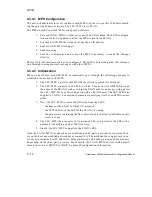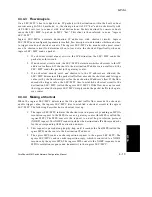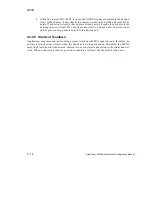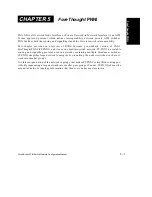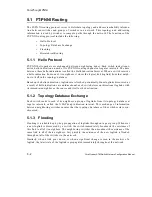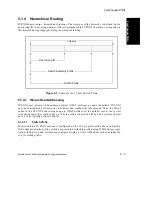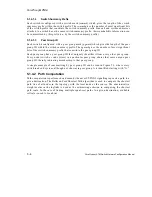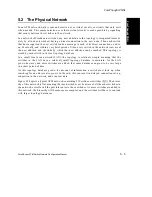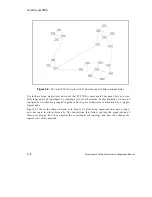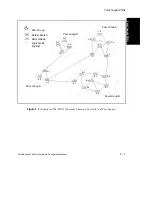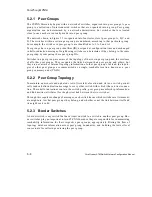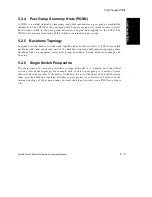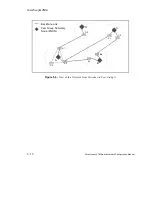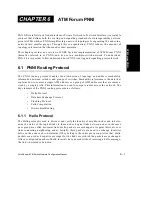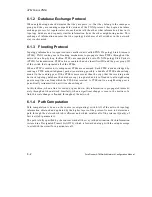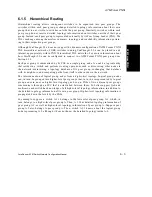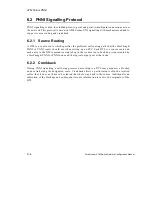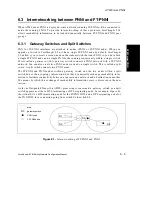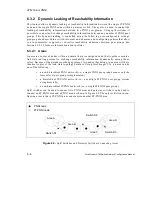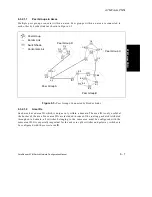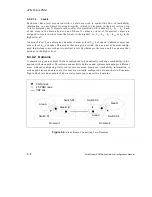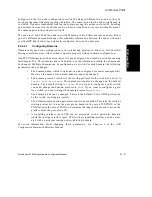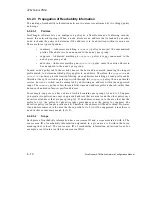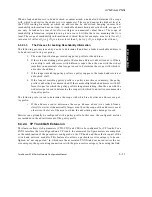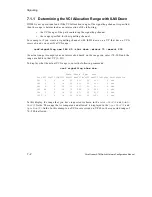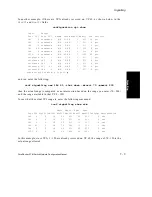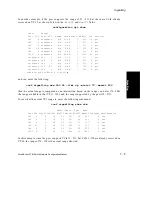
6 - 2
ForeRunner ATM Switch Network Configuration Manual
ATM Forum PNNI
6.1.2 Database Exchange Protocol
When neighboring nodes determine that they are peers; i.e., that they belong to the same peer
group and they are running compatible versions of the PNNI protocol, they begin a database
exchange process. At regular intervals, each node tells the other what information it has in its
topology database and requests similar information from the other neighboring nodes. This
exchange of information ensures that the topology databases of all switches in the network
stay synchronized.
6.1.3
Flooding
Protocol
Topology information is organized into smallest units called PNNI Topology State Elements
(PTSEs). PNNI routing uses a flooding mechanism to propagate these PTSEs throughout the
network in a hop-by-hop fashion. PTSEs are encapsulated into PNNI Topology State Packets
(PTSPs) for transmission. PTSPs always contain the node identifier (ID) and the peer group ID
of the switch that originated all of the PTSEs.
When a PTSP is received, its component PTSEs are examined. Each PTSE is acknowledged by
sending a PTSE acknowledgment packet (containing possibly a bundle of PTSE acknowledg-
ments) to the sending peer. If the PTSE is more recent than the copy that the receiving node
has in its topology database, the database copy is updated and is re-flooded to all neighboring
peers except the one from which the PTSE was received. A PTSE sent to a neighboring peer is
periodically retransmitted until it is acknowledged.
In this fashion, when a link is created or goes down, this information is propagated immedi-
ately throughout the network. Similarly, when a significant change is seen in the metrics of a
link, this state change is flooded throughout the network.
6.1.4 Path Computation
Path computation is done on the source (or originating) switch. All of the network topology
information obtained and updated by the higher layers of the protocol is used to determine a
path through the network which is efficient and which satisfies all of the relevant Quality of
Service (QoS) parameters.
The path is fully specified by the source switch all the way to the destination. Path information
is stored in a Designated Transit List (DTL), which is forwarded along with the setup message
to establish the circuit for a particular call.
Summary of Contents for forerunner series
Page 6: ......
Page 16: ...TOC 10 ForeRunner ATM Switch Network Configuration Manual Table of Contents ...
Page 20: ...LOF 4 ForeRunner ATM Switch Network Configuration Manual List of Figures ...
Page 22: ...LOT 2 ForeRunner ATM Switch Network Configuration Manual List of Tables ...
Page 30: ...viii ForeRunner ATM Switch Network Configuration Manual Preface ...
Page 144: ...3 58 ForeRunner ATM Switch Network Configuration Manual Configuring an Emulated LAN ...
Page 180: ...6 12 ForeRunner ATM Switch Network Configuration Manual ATM Forum PNNI ...
Page 220: ...9 6 ForeRunner ATM Switch Network Configuration Manual Configuring Timing ...
Page 300: ...D 24 ForeRunner ATM Switch Network Configuration Manual Configuring FramePlus Modules ...
Page 308: ...Acronyms 8 ForeRunner ATM Switch Network Configuration Manual Acronyms ...
Page 346: ...Glossary 38 ForeRunner ATM Switch Network Configuration Manual Glossary ...
Page 352: ...Index 6 ForeRunner ATM Switch Network Configuration Manual Index ...

